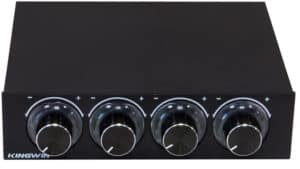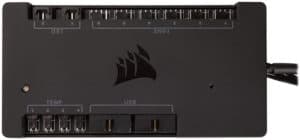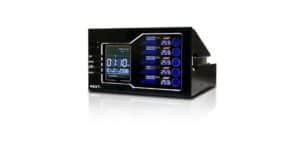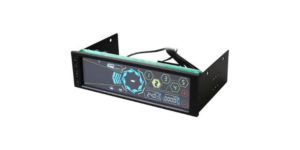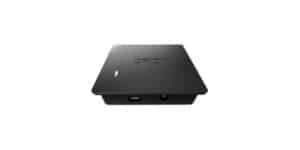Best Fan Controllers of 2023 – Internal and External

Table of Contents
Internal fans play a vital role in cooling your system. As most people know, heat is the death of longevity for computer components. The cooler you can keep your PC, the longer you can keep it running smoothly and efficiently. And the best fan controllers can help.
Most computer cases come with a number of internal case fans, anywhere from just one or two all the way up to ten or more. However, these case fans run on their own and cannot receive information or be modulated. If you are lucky, your case may include an on/off switch at most.
This is where a PC fan controller comes in. It gives you the power to customize and run your fans the way you want to. This has a number of benefits over autonomous case fans.
Products at a Glance
How we picked the best fan controllers
We have chosen an array of the best PC fan controllers, covering a number of different form factors – internal devices, ranging to ones that take up drive bays in your PC case. Each has its own merits depending on the type of fan control system you are trying to build.
A fan controller might not be one of the first upgrades you consider adding when you are building a system, but with the help of this guide, adding one a best PC fan controller listed here will help you out more than you think, and help you tame the growling beast of all those shiny RGB case fans you have just spent a small fortune on.
Product Reviews
- Affordable
- Easy to install and useAffordable
- Gives users control of up to 4 fans
- Fits easily in the standard 3.5" PC front bay casing slot making it portable
- Controls fan speed and noise effectively
- Only allows for three pin fan connections
The Kingwin FPX-001 is an excellent budget fan controller that gets the job done. It has speed adjustment knobs for up to four fans. Unfortunately, this controller only allows 3-pin fan connections.
On the plus side, it comes equipped with nice-looking LED lights that indicate whether or not the fans are on, which is a nice, albeit largely unneeded (you have ears, right?) quality of life feature.
- Four thermistor inputs let you monitor temperatures in different spots through system
- Accurate and superior hardware control
- Can connect with internal CORSAIR LINK devices
- Controls three and four pin fans from a complete stop to maximum speed
- Slim form factor allowing you to do installations anywhere in your case
- RGB LED strips sold separately
While the Corsair Commander Pro doesn’t look like much on the surface, as a PC case fan controller it offers an impressive amount of functionality and customization. Using their Corsair Link software, you are able to fully manage and control your case fans. This does take place of an actual display, but honestly, we prefer just using a powerful, feature-heavy software.
This controller can fit up to six fans, as well as two RGB channels, four temperature inputs, and even a couple internal USB devices. When it comes to connectivity, this fan controller is the king.
It even includes four thermal sensors, along with some other extras. The fan connectors can support both 3-pin and 4-pin fans.
This is undoubtedly one of the best in terms of out-and-out PC case fan controller on the market today.
- Temperature alarm to monitor rising temps
- Easy to install and manipulate
- Auto/manual modes for easy customization of your fan speed
- Able to store all your fan and calendar settings even when the system is off
- Easy to read and understand NZXT designed interface
- Works with only three pin connectors
The NZXT Sentry LX is a larger dual bay fan controller and comes with a RGB led display to match. It includes automatic and manual modes for controlling fan speeds.
It also has a temperature alarm that notifies you when temperatures go beyond safe levels. It even stores fan and calendar settings when the controller is off. The main downside is that it only supports 3-pin connectors.
There is one other downside, however: it uses two 5.25” bays. On its surface, this might not seem like a big deal, after all, nowadays disk drives are less useful than ever before. But that’s exactly the problem. Because 5.25” bays are less useful, they are gone from many cases altogether and the rest rarely go out of their way to include two of them.
- Expansive 5.5" touchscreen for smooth interaction
- Monitors fan speeds and temperatures of up to 5 individual three or four pin fans
- Silent modes and performance for best cooling operation
- Does not connect with PWM
A 5.5 inch touchscreen on the Thermaltake Commander FT looks sleek and provides many options for those in need of choice.
The Thermaltake Commander FT case fan controller can run auto, manual, or silent modes to give you options for any occasion. It works with 3-pin and 4-pin connectors to control up to five fans at once.
- Custom fan naming for easy control of individual fans via a cam software
- Preset fan profiles for easy control
- Combines both non-rational and variable installation options for a simple, un-instructive fan control
- Supports both three and four pin fans
- On the expensive side
Tone down the noise levels
Fans can be rather loud, and if all you’re doing is browsing the web, there is no need for them to be going full throttle. This also increases the fan’s longevity and is more energy-efficient. If you switch to a more demanding task, like gaming, though, a PC fan controller will allow you to quickly adjust your fans up to speed with this enhanced cooling system. It’s easy to see why a fan controller can soon become an indispensable item in your system
In this guide, we will cover the best fan controllers on the market today. Then, we’ll go over everything you need to know to make the best purchase for your set-up.
Are all fan controllers the same?
No, there are different types, including, circuit-board type fan speed controllers, variac style fan speed controllers, and hybrid fan speed controllers.
Is it necessary to have a fan controller?
Yes, if you want to control the temperature of your rig. They also can be used to reduce noise.
Our Verdict
If you are looking to introduce a degree of fan control into your system and have a ton of case fans in your PC case to hush up then you can’t really go wrong with this from Kingwin, which comes top of our recommendations for our 2021 best PC fan controllers.
The Corsair boards offer both internal convenience and reliability of a great brand but as they are controlled by fan-controlled software, it’s just one more program taking up system headroom.

